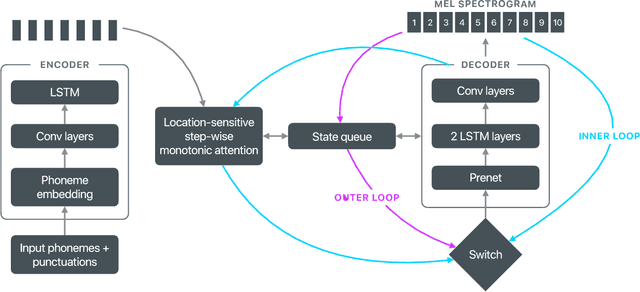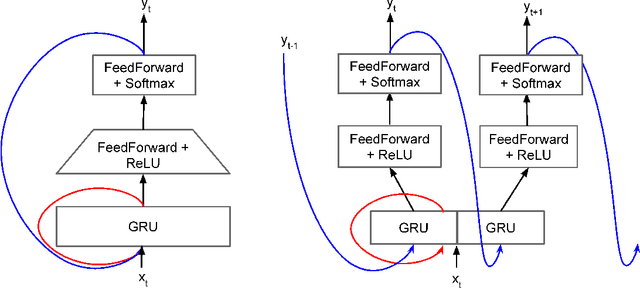Ladan Golipour
Improving the quality of neural TTS using long-form content and multi-speaker multi-style modeling
Dec 20, 2022



Abstract:Neural text-to-speech (TTS) can provide quality close to natural speech if an adequate amount of high-quality speech material is available for training. However, acquiring speech data for TTS training is costly and time-consuming, especially if the goal is to generate different speaking styles. In this work, we show that we can transfer speaking style across speakers and improve the quality of synthetic speech by training a multi-speaker multi-style (MSMS) model with long-form recordings, in addition to regular TTS recordings. In particular, we show that 1) multi-speaker modeling improves the overall TTS quality, 2) the proposed MSMS approach outperforms pre-training and fine-tuning approach when utilizing additional multi-speaker data, and 3) long-form speaking style is highly rated regardless of the target text domain.
On-device neural speech synthesis
Sep 17, 2021



Abstract:Recent advances in text-to-speech (TTS) synthesis, such as Tacotron and WaveRNN, have made it possible to construct a fully neural network based TTS system, by coupling the two components together. Such a system is conceptually simple as it only takes grapheme or phoneme input, uses Mel-spectrogram as an intermediate feature, and directly generates speech samples. The system achieves quality equal or close to natural speech. However, the high computational cost of the system and issues with robustness have limited their usage in real-world speech synthesis applications and products. In this paper, we present key modeling improvements and optimization strategies that enable deploying these models, not only on GPU servers, but also on mobile devices. The proposed system can generate high-quality 24 kHz speech at 5x faster than real time on server and 3x faster than real time on mobile devices.
 Add to Chrome
Add to Chrome Add to Firefox
Add to Firefox Add to Edge
Add to Edge